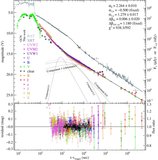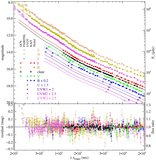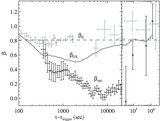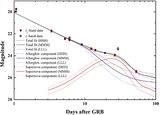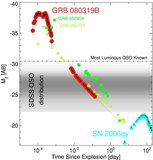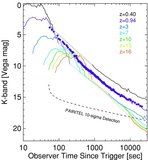Image Details
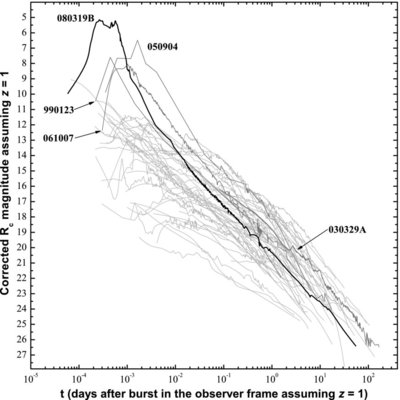
Caption: Figure 7.
Comparison between the observed R-band light curve of GRB 080319B and those of other GRB afterglows, both from the pre- Swift as well as the Swift era, shifted to a common redshift of z = 1 with the method of Kann et al. (2006). The prompt flash of GRB 080319B is clearly shown to be the most luminous optical transient ever observed with a high degree of confidence. In spite of this, because of its rapid early decay the afterglow at late times is quite unremarkable, and is similar in this regard to the three other "ultra-luminous" bursts to date: GRBs 990123, 061007, and 050904. In contrast, the bursts that remain the brightest tend to be those with late plateaus and slow decays.
Copyright and Terms & Conditions
© 2009. The American Astronomical Society. All rights reserved.


